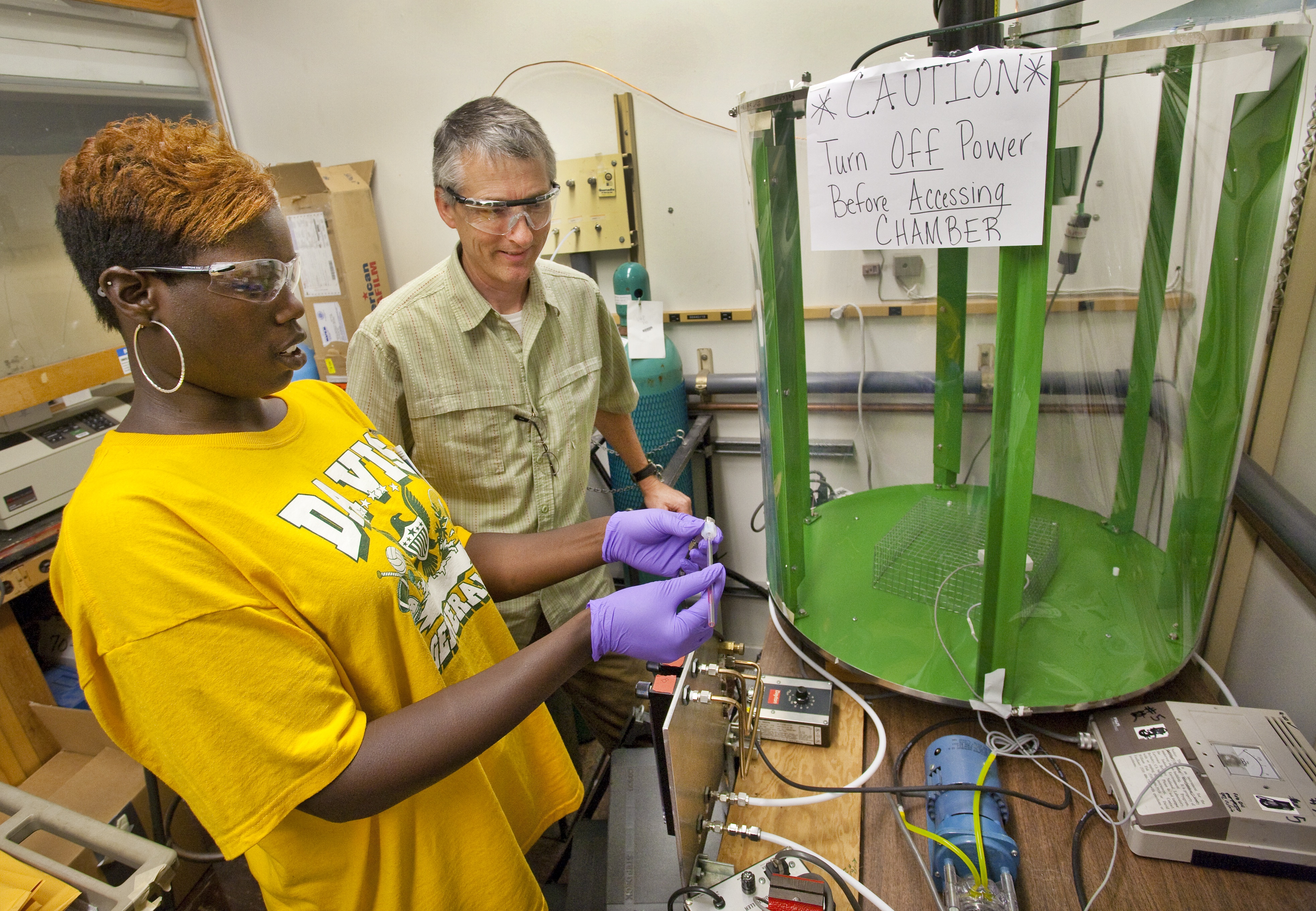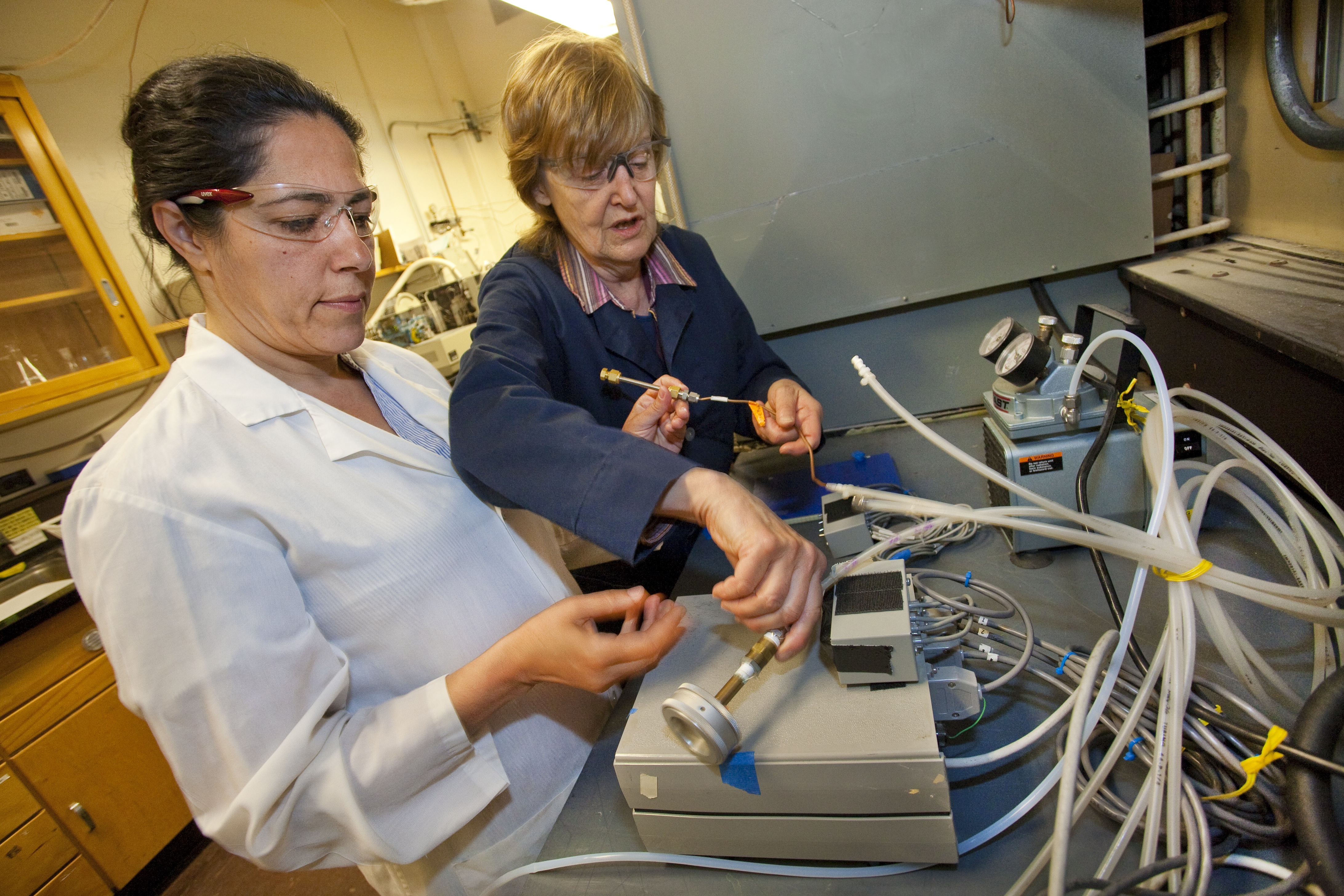Contact: Julie Chao, 510-486-6491, [email protected]

Cicely Mallett, a science teacher at Davis Middle School in Compton, California, conducted an experiment on the influence of the ventilation rate on volatile organic chemical emissions from building materials with her mentor, Randy Maddalena of the Environmental Energy Technologies Division, as part of a science education program at Berkeley Lab this year.
BERKELEY, CA — If so-called “green collar” jobs will lead California out of its economic downturn, students at two East Bay high schools will be well prepared to ride the wave. Thanks to legislation sponsored by State Senator Loni Hancock, some of them will be the first graduates of “Green Academies,” three-year programs in high schools around the state to prepare students for the green economy.
Berkeley Lab, led by its Center for Science and Engineering Education (CSEE), is partnering with Oakland Technical High School and El Cerrito High School in their Green Academies. Beginning this fall, students and their teachers will be able to take lab tours, hear talks by Berkeley Lab scientists and engineers and eventually, some will have eight-week summer internships in an actual laboratory.
“What students and teachers will gain is an experience with real research in a variety of green science and engineering fields,” said CSEE director Susan Brady. “They will struggle with ambiguities, failures and frustrations. In most traditional classrooms, you don’t get that—the lab experiments are set up to succeed. They’re cookbook labs where you walk through a procedure, and it will work because it’s been done seven million times and we know it works. We want students to understand that real science is complex and exciting – and that these areas of research are relevant to their lives.”
The program is funded by the California Partnership Academy through the California Department of Education. High schools can apply for $42,000 in funding for the first academic year, and the amount goes up subsequently as the number of students enrolled increases. The funding allows for up to 60 Green Academies around the state.
Students participate in grades 10 through 12, and the curriculum is geared towards ensuring they will be eligible to apply for a four-year college upon graduation. The program at Oakland Tech is focused on energy while El Cerrito High is looking at renewable paint for auto painting. Thirty-two students have been accepted for Oakland Tech’s first Green Academy, half of whom are considered at-risk.
“The program is meant to keep students engaged in learning, stay in school and participate in something very relevant to their own lives and the greater society,” said Hancock. “They’ll learn about green technology in all of their courses, from science to English. By focusing on energy conservation and efficiency and the development of safe, sustainable energy sources as a career pathway, the Green Academy provides an opportunity to make sure that young people have the skills to go on to a college or university, or directly enter the workforce.”

Fatemeh Mizbani, a science teacher at Berkeley High School, conducted an experiment on nitrogrenated compounds in secondhand smoke with her mentor, Lara Gundel of the Environmental Energy Technologies Division, as part of a science education program at Berkeley Lab this year.
The Green Academy is structured as a “school within a school.” Participating students will take all of their classes together, including English, history, biology and environmental science. Examples of jobs they will be qualified to do after graduation include energy efficiency auditing, weatherization, installing solar panels and green construction.
Other members of Oakland Tech’s advisory committee, besides Berkeley Lab, are Laney College, UC Berkeley, the Ella Baker Institute and PG&E, which is also offering mentorship programs and internships.
Berkeley Lab is receiving no additional funding for its participation in the Green Academies. CSEE has years of experience in running programs for both students and teachers. Scientists and engineers from two divisions—Engineering and Environmental Energy Technologies—will provide opportunities to science teachers and students for job shadowing, mentorships and summer internships over three summers. “We know this does make a big impact on people that come here,” said Brady. “Many people tell us it changed their life.”
For more information about Center for Science and Engineering Education:
http://csee.lbl.gov/